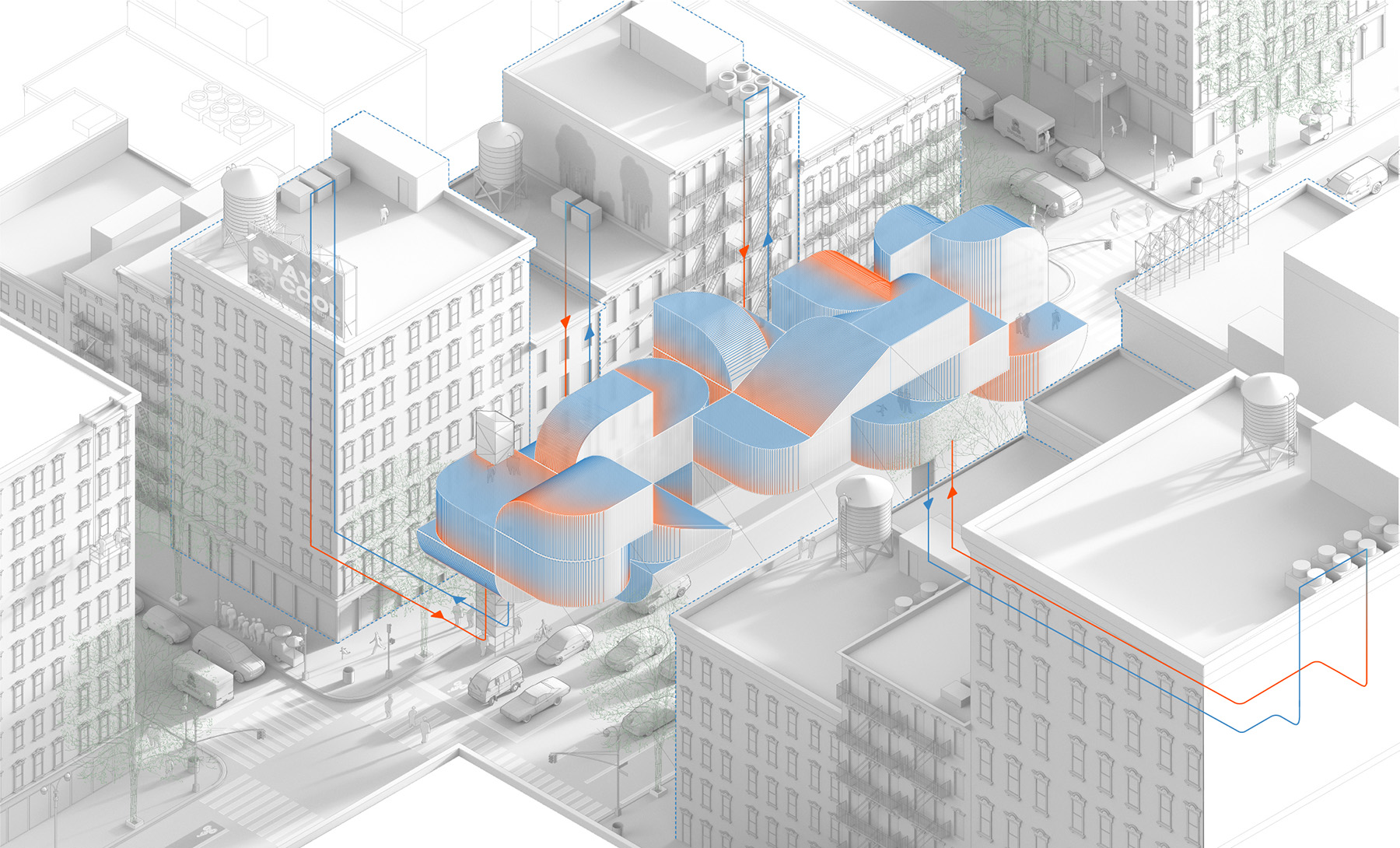
By Catherine A. Cardno, Ph.D.
Framlab — a research and design studio based in New York City and Bergen, Norway — has created a speculative design for artificial, inhabitable “clouds” that could be floated above busy urban streets and other areas to combat urban heat island effects. Dubbed Oversky, the airships are part of the company’s mission to explore alternative, zero-emission means to help keep cities cool as part of larger resilience and heat-mitigation strategies.
The design involves geometrically shaped, interconnected volumes that would mimic the cooling benefits of the natural world’s thick, dense, low-lying clouds that radiate the sun’s rays back into the atmosphere.
The interconnected volumes could also expand the available space in urban areas and be used to create local cultural centers, classrooms, art studios, offices, or even cinemas, depending on the specific needs and interests of an urban neighborhood. Bridges to existing buildings could anchor the volumes and allow people to circulate throughout the floating interiors.
Lightweight, rigid, carbon-fiber frames would encase the volumes, including ones that hold numerous helium cells that would provide the airship’s buoyancy. A series of geometric shapes holding these cells would be placed around the airships’ inhabitable rooms.
The volumes would reduce heat buildup in cities by shading the streets and urban spaces beneath them as well as providing radiative cooling through nanophotonic engineering of the modules’ coating. A foamlike material with nanoscale air pockets would reflect sunlight in a narrow band of the light spectrum with wavelengths that could be transmitted into the atmosphere and outer space, according to the designers.
A titanium dioxide exterior coating on the volumes would also work to clean the surrounding air by breaking down airborne pollutants.
The volumes would be designed to absorb sound from below, reducing noise pollution in busy urban areas, and to channel rainwater from above for collection and use.
The collected water would be used in a hydronic radiant cooling system, wherein a network of thin pipes extending along the skin of the volumes would cool their interior spaces. The network could also be connected to neighboring building systems to cool them as well. Excess water could be released as a fine mist underneath the building to provide evaporative cooling to the urban spaces below.
Lighter-than-air vehicles have had a problematic reputation since the 1937 Hindenburg airship catastrophe in New Jersey. However, the company argues that helium-based airships (different than the Hindenburg, which used the more flammable hydrogen) are seeing renewed interest from companies and governments around the world as this core technology is now safer, more advanced, and more affordable than previously, with a smaller carbon footprint than other alternatives.
Catherine A. Cardno, Ph.D., is the managing editor of Civil Engineering Online.
This article first appeared in the September/October issue of Civil Engineering as “Artificial Cloud Cover for Cities.”



